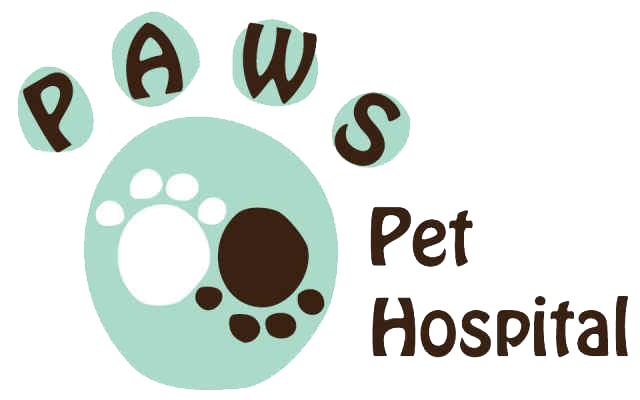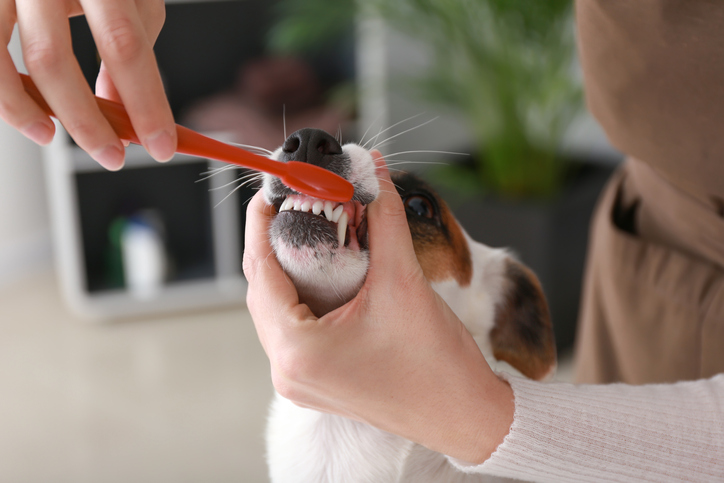Imagine if you never brushed your teeth or had your teeth cleaned by a dentist. How would your mouth feel? Pets can’t take care of their own dental health, which is why we need to step in.
At P.A.W.S. Pet Hospital, we make dental care a priority for our patients. That’s why we’re offering half price dental radiographs through the end of February during Dental Awareness Month.
The Dangers of Poor Pet Dental Hygiene
Pets who don’t receive proper dental care are at risk for more than just bad breath—although that’s the first sign you’ll likely notice if your pet has periodontal disease. Also called dental or gum disease, periodontal disease can not only cause gum recession, infection, and tooth loss, but also changes in the heart, kidneys, and liver.
By 3 years of age, most dogs and cats have some form of periodontal disease.
What Is Periodontal Disease?
Plaque forms on pets’ and people’s teeth constantly. When it’s not removed by brushing, it changes into hardened tartar within about 24 hours.
Tartar can’t be brushed away. It has to be removed during a professional dental cleaning.
If bacteria-laden tartar isn’t removed through a veterinary dental cleaning, the pet will end up with gingivitis (inflammation of the gums) and eventually advanced periodontal disease (infection and loss of tooth support).
When pets don’t receive regular dental care, they may need more than just a cleaning. Dental extractions may be required to remove infected teeth and make a pet’s mouth healthy again.
How Can I Keep My Pet’s Mouth Healthy?
Make Home Care a Priority
You play an essential role in your pet’s dental health. Brushing your pet’s teeth is one of the most important steps you can take to help keep periodontal disease at bay.
Never use human toothpaste in pets! It contains ingredients that can make your pet sick.
Although daily brushing is ideal, we understand that it may not always be possible. Fortunately, you have a number of dental products to choose from that can also help control plaque and tartar buildup in your pet:
- Special dental diets and chews
- Dental toys
- Oral rinses and sprays
- Drinking water additives
- Dental sealants
Not all dental products are created equal. Look for products with the Veterinary Oral Health Council (VOHC) Seal of Acceptance, and ask us what products we recommend.
By being proactive about dental care, you can help protect your pet’s overall health.
Schedule a Professional Dental Exam
Bringing your pet in for regular veterinary dental exams and cleanings is the other important step toward achieving better dental health for your dog or cat.
When your pet comes in for a dental exam, we’ll examine his or her teeth and gums and let you know what we recommend to maintain or improve your pet’s oral health.
We use digital dental radiographs (x-rays) to get a true picture of what your pet’s teeth look like under the gums—not just on the surface. We can only assess around 40% of a dog or cat’s teeth by just looking at them. The rest is hidden, so we use x-rays to show us what might be lurking unseen, such as painful root disease, tooth resorption, or the extent of a cracked tooth. That way, we can be sure we’re properly treating your pet.
All dental cleanings at P.A.W.S. are performed following American Animal Hospital Association (AAHA) guidelines. As an AAHA-accredited veterinary hospital, we take every precaution to ensure that the procedure is as safe as possible, starting with performing preanesthetic bloodwork and actively monitoring your pet during and after the cleaning.
If your pet needs any additional dental care, your P.A.W.S. veterinarian will make sure you understand what needs to be done and why.
Schedule Your Pet’s Dental Exam Today
At P.A.W.S. Pet Hospital, we’ll create an individualized dental health plan for your pet. Call us or make an appointment today.

